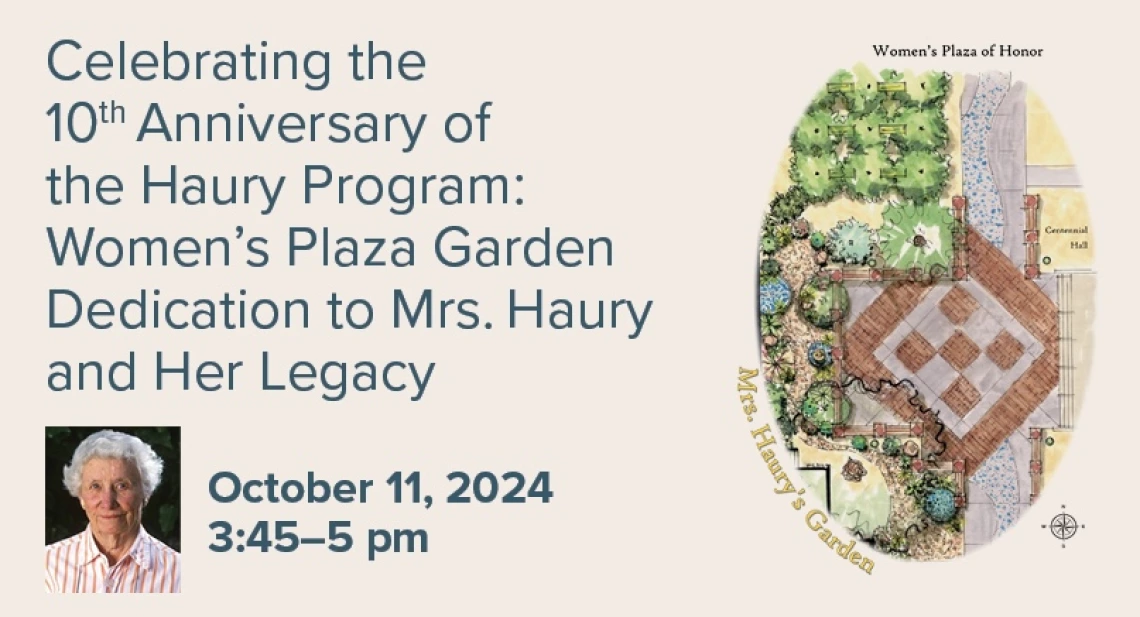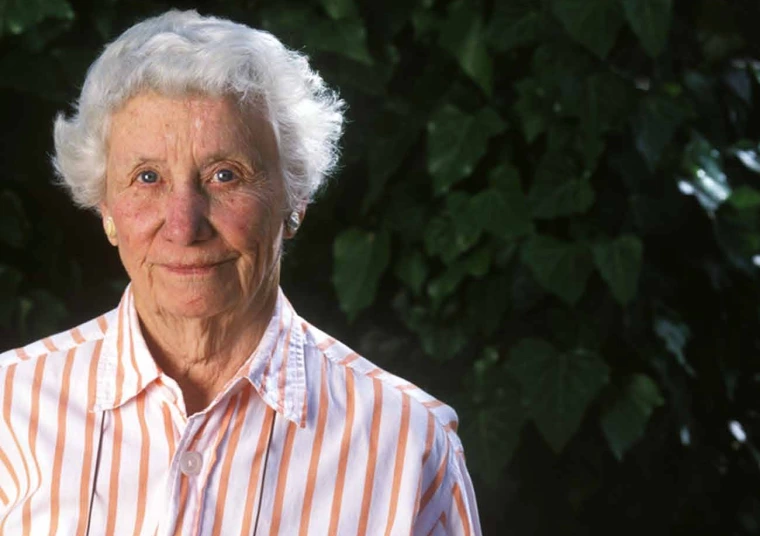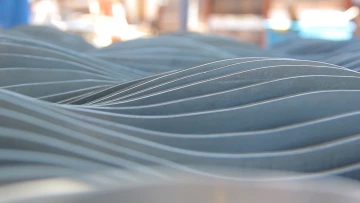The Haury Program is Turning Ten: Celebrations to Kick-off on October 11th with Women’s Plaza Garden Dedication to Mrs. Haury and Her Legacy

In 2014, the UArizona Foundation became the recipient of a $50 million bequest from the Haury Estate to establish an endowment in support of scientific and cultural studies rooted in social and environmental justice, with a focus on the American Southwest. The bequest, one of the largest in the University's history, founded the Agnese Nelms Haury Program in Environment and Social Justice, or the “Haury Program” for short. Mrs. Haury believed in social justice, and sought to solve the many "wicked" societal and environmental problems facing our region and the world. The Haury Program seeks to honor her legacy. “As a University-based funder, program and people supporter, tribal and community engagement partner, and a cross-University liaison, the Haury Program is unique,” shared Prof. Toni Massaro, the Executive Director of the Haury Program. “No other such program exists at the University of Arizona, in Arizona, or, we believe, in the nation. We refer to ourselves as a kumquat – neither apple nor orange.” The Haury Program is now a part of the Arizona Institute for Resilience (AIR), where researchers, educators, problem-solvers, and innovators from diverse disciplines work together to develop innovative and practical solutions to the environmental and resilience challenges we face today. “We recognize that the University of Arizona is a land-grant institution that resides on the ancestral homelands of the Tohono O’odham and Pascua Yaqui, and we honor the University of Arizona’s commitment as a land-grant institution to the Native American students and tribal nations by putting this commitment into action,” added Nancy Petersen, Assistant Director.

Agnese Nelms Haury (1923 – 2014) was a passionate philanthropist with a vision for change- makers and innovative scholarship. During her life and world travels, she supported many people and organizations working on social justice and the environment. Her life-long commitment to the Southwest included a wide range of University of Arizona and regional initiatives, including:
- UArizona College of Law programs in public interest law and immigration paralegal training;
- The Court Interpreter Training Institute;
- The UArizona’s Southwest Center, including recruiting prominent writer, conservationist and food activist Gary Nabhan;
- The work of ecologist David Yetman and his TV programs, "The Desert Speaks" and "In the Americas";
- Construction of the Bryant Bannister Tree-Ring Building, opened in 2013, which houses the Laboratory of Tree-Ring Research and its irreplaceable collection of tree-ring specimens from around the world.
Between 2014 and 2019, the Haury Program focused on multi-cultural scholarship and community building to promote and build capacity for wider social and environmental justice projects. This work included supporting numerous faculty fellows and students, awarding Seed and Challenge grants to the University-community partnerships with transformational impacts, and well as providing technical assistance, resources, and trainings to the awardees and the community. In 2020, the Haury Program pivoted and refocused its larger vision of environment and social justice on envisioning a world in which Indigenous resilience, sovereignty, and ways of knowing are respected and advanced to meet climate change challenges through globally impactful University of Arizona collaborations in research, education, and outreach. In order to implement this vision, Haury’s Indigenous Resilience Initiative work and funding has been centered on three focus areas:
- Funding education, research, and outreach that promote Indigenous resilience in ways that respect tribal knowledge and sovereignty, for example co-establishing and supporting the UArizona Indigenous Resilience Center (IRes);
- Supporting Native American pathways to and at the University of Arizona for students, faculty, and staff, which includes supporting several student-serving nodes at the University and partnerships with tribal colleges, for example supporting programs at the University such as Native American Advancement and Tribal Engagement (NAATE), Native American Initiatives (NAI), Native American Student Affairs (NASA), Indigenous Peoples Law and Policy Program (IPLP), Justice Advocates Coalition, University of Arizona American Indian Science and Engineering Society (AISES) Chapter, and Cultural & Inclusive Experiential Learning Opportunities (CIELO) as well as supporting graduate level researchers working on Indigenous issues through Native Pathways Graduate Research Awards; and
- Centering building and fostering strong, trust-based external partnerships, including working directly with tribes, for example partnering with the Navajo Nation and other entities on the Water Access Coordinator Group’s effort to bring running potable water to Navajo families, sponsoring national AISES conferences and of the Arizona Indian Nations and Tribes Legislative Days, and being one of the organizers of the coalition with the Arizona Department of Education – Office of Indian Education, which spearheaded new state legislation supporting “Natives Who Code”, i.e. a state-wide program dedicated to co-creating an Indigenized computer science curriculum with Arizona tribes.
There is more. For example, the Haury Program supported the University of Arizona’s creation of the first-ever tribe-based micro-campus, the teaching visit of the United Nations Special Rapporteur on Indigenous Human Rights, and also sponsored an educational program on Supreme Court law that involves tribal rights.
To mark the 10th Anniversary of the Haury Program, plans are being put in place for a year-long celebration of people and projects, including releasing a video series highlighting some of the Haury Program awardees through the decade. The celebrations will kick off on October 11th, 2024 with an event at Women’s Plaza of Honor, where a garden will be dedicated to Mrs. Haury, and “The Women of Haury” who were there at the start of the program will also be honored. Please RSVP at this link.
For more information and to follow all the happenings, please visit the Haury Program’s website.
The image selected to mark this year of celebrating Haury Program’s 10th Anniversary is entitled “Coalescence.” It is built on a physical piece of art that was commissioned and installed above the entrance into the Mrs. Haury Lecture Hall in ENR2 in 2017, in honor of Mrs. Haury and her legacy. The art represents the joining or merging of elements to form one mass or a whole to make a bigger impact. This is exactly what the Haury Program is dedicated to achieve through all of its work.
“Coalescence” Artist statement:
“In chemistry and physics, coalescence describes the same laws of nature as the term "constructive interference." I like the importance of coalescence in the formation of raindrops. The smaller particles come together to form drops. The drops, too heavy to stay in the cloud upon achieving critical mass, release, and contact the water to create a ripple (impact and effect). The undulating waves from multiple impacts come together, coalesce, as Mrs. Haury’s legacy brings together individuals uniting for the common goal of social justice.” – Troy Neiman


